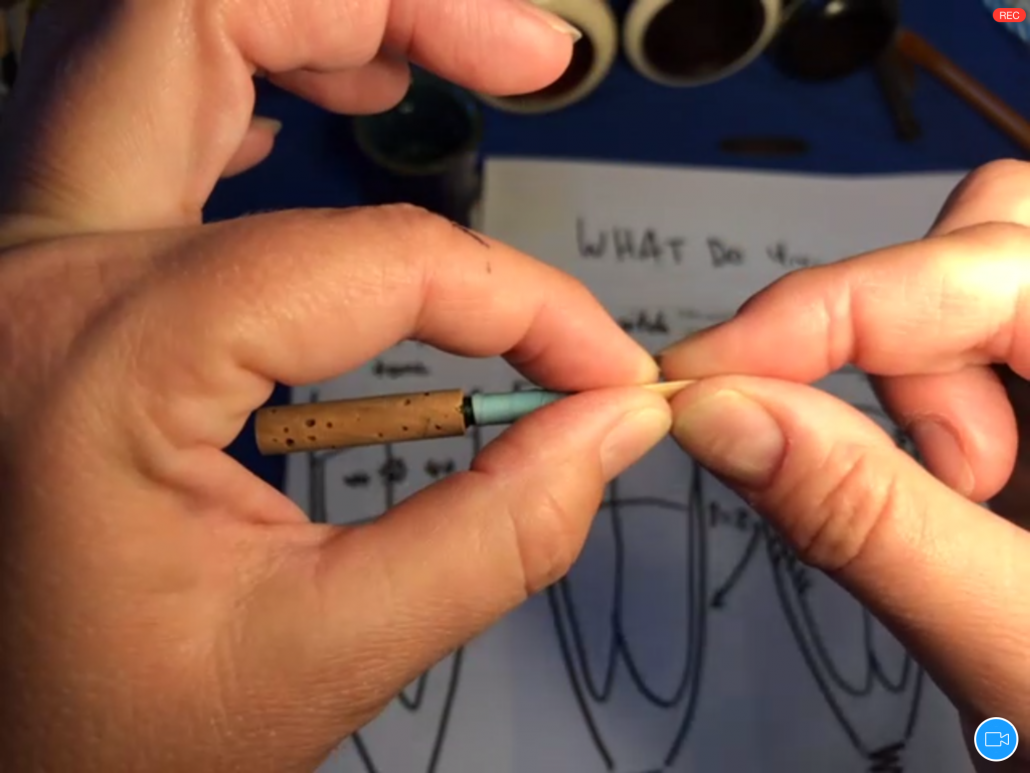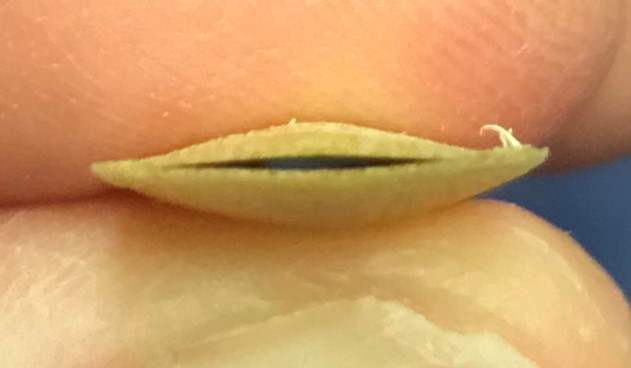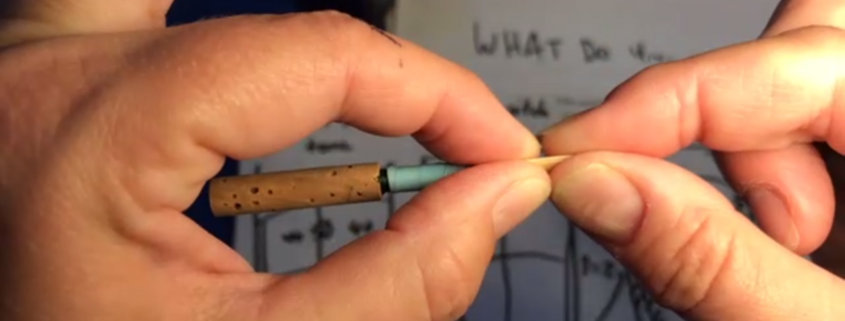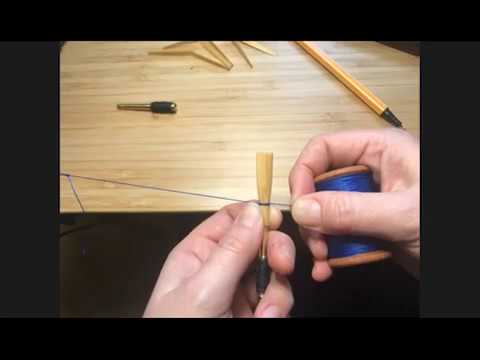Fulfilling needs and desires with “Heart Moments”
Enrollment, Encouragement, Awareness, Companionship and Empathy

Photo: Daria Khutoretskaya
What is the single most important characteristic you need and desire in an oboe reed?
For me a reed must have the proper opening and tension.

From the moment I fold the cane, I am already exploring ways to encourage the reed to cooperate with its opening and tension. Without getting this right early on in my reed making process, the danger is huge that I will take off too much or too little cane. A piece of arundo donax has a mind of its own and if I am too forceful in imposing my will, it will break.
Yikes. Relationships are like this, too.
I was recently enjoyed calls with my old pals, Ed and Jason. These are two of those rare friendships that I have managed to carry over decades, across oceans, through joys and grief. Ed asked me what is most important to me in my relationships. More specifically, he wanted to know what is the most important thing I wish to CONTRIBUTE to a relationship. I loved this question because it is tempting to merely ask ourselves what do we want to GET from friends or partners.
(Stick with me, this will be about oboe reeds.)
After reflecting for a moment, I answered “companionship”. Ed said he wants to bring “empathy” to his relationships. Ooh, that’s a good one. Both are ambitious and require commitment. Both are easier said than done.

Ed (at left) and Jason have belonged to my inner circle since the three of us met during high school years at Lutheran Summer Music camp. Here we are in our mid teens leaning on the Picasso in downtown Chicago. Yup that’s me in the middle almost exactly one year after my first oboe reed making lesson with marvelous Merilee Klemp. A few years later, Ed, Jason and I all chose to attend St. Olaf College and have continued to stay in touch and make music together for more than three decades.
Let’s be honest here. We all hope to GET something out of our relationships.
Perhaps we want to be
- seen
- adored
- admired
- respected
- understood
- recognized
- trusted
- loved
- minded
- served
- desired.
There is no right or wrong here and I believe we all have essentially the SAME needs and desires. After asking hundreds of oboe reed makers, I also know that we all have essentially the SAME needs and desires for our reeds.
- beautiful sound
- flexibility
- agility
- great intonation
- evenness throughout the registers
- great response
- easy enough to play for long stretches, nevertheless rich and deep sounding
- plentiful
Each of us prioritizes these differently and that is what sets us apart and equips us to build fulfilling relationships and to express ourselves with our unique message. If we can get these priorities sufficiently covered, we are almost boundless in our abilities to BRING wonderful things to the world and contribute generously.
The societal response to COVID 19 has made fulfilling some of these needs and desires challenging. It is easy to fall into a scarcity mindset from which it is nearly impossible to ask “What can I CONTRIBUTE to my relationships” because we might be feverishly looking for ways to fill our deficits, forcing our relationships to the point at which they crack.
Begin with Self-Awareness
I am aware of my need and desire for the opening and the tension of the reed to be just right. The vision is strong in my mind. The proper tension and opening are central to
- accommodating my style of wind production
- allowing deft finger agility
- dictating the availability of my repertoire of articulations (see Johann Joachim Quantz On Playing the Flute c. 1752 or Jay Light, Essays for Oboists c. 1994)
- determining my stamina and
- freeing up my mental bandwidth so that I am more in touch and engaged with the world around me, my colleagues, the sound frequencies, the energy level of the listeners and the interaction with the space and acoustic around me.
Proper tension and opening in a reed is like the couple’s embrace in Argentinian tango or the supple canvas ready to take the painter’s brush. It is the foundation on which to create.
I cannot force the reed to take on the right tension and opening any more than I can force someone to love me and adore me or give me whatever I think I need and desire.
Once I become self-aware, owning up to my needs and desires, it becomes a matter of
Enrollment.*
The best I can do is offer the reed attention, companionship and empathy. I can honor its natural tendencies then use my skill, experience and knowledge to respond to its nature, encouraging it to join me in the dance and to paint masterpieces. Not every reed can be enrolled, and it is not necessarily a question of skill or quality. It might just be incompatibility. So there may come a moment when we part ways. (I’ll share a secret with you, I am terrible at recognizing the moment when it is time to part ways.)
“Heart Moments”
In my experience, there are two “heart moments” when I first step into an “embrace” with a piece of cane. These are the two moments when we stress the cane.
Preparing the cane to be an oboe reed is mostly about paring it down to the proper dimensions. While cutting and splitting and pre-gouging and gouging the cane, we are merely making the material smaller. Cracks do happen but are fairly rare. We are working WITH the cane, often along its grain, not stressing it.
There are two moments that are vital to the reed’s development in which we ask the cane to take on a new existence. We CHANGE the cane and we STRESS it. The cane may crack.
These are the two moments “heart moments”:
- The first moment happens when you fold the cane.This may be before you shape it or after depending on your shaping method. (Some shaping forms lie flat, some shaper tips require you to fold the cane over in order to shape.)
- The second moment happens when you ease the cane to take the shape of your staple. Again, depending on your binding method (using wire or thread, using a heated mandrel method, or, free hand as in the video), this may happen at different stages of your reed making.
In the video I demonstrate the “heart moments” with a piece of 15 mm diameter cane for a Baroque oboe reed. This is exactly the same procedure I use for my modern oboe reeds but it is slightly easier since the cane is thinner and narrower.
No matter at which point in your process you apply these stressors to the reed, I call these “heart moments” because I have found it a good practice to have a clear mind and a loving attention on the reed in these moments. What an opportunity! I encourage you become very aware of your breath at these moments and think of the cane a the living thing that it is. The cane has its first chance to share with you its tension, its give, its springiness, its willingness to cooperate. These are the first moments you will have to get to know yourself and the cane better.
Contribution
Relationships and reeds are both remarkably resilient and frighteningly fragile.
So the next time you are feeling like you are missing something and asking yourself what you can GET OUT of a relationship, honor this feeling first and know you are not alone. Through this self-awareness you can start to pay attention to the needs and desires of the people nearest you or to your oboe cane. What you might do to contribute in some small way to your dear one’s fulfillment or to releasing the potential in the cane? By taking a small action to this end, maybe, just maybe, you will find your own needs and desires met,
though probably not in the way you expected.
Ed (at left), me and Jason ca 2009

*For a really inspiring read (r-e-A-d), check out Benjamin Zander’s book The Art of Possibility.

 2020 Photo Credit: Daria Khutoretskaya
2020 Photo Credit: Daria Khutoretskaya


 Hans Hermann Ziel
Hans Hermann Ziel